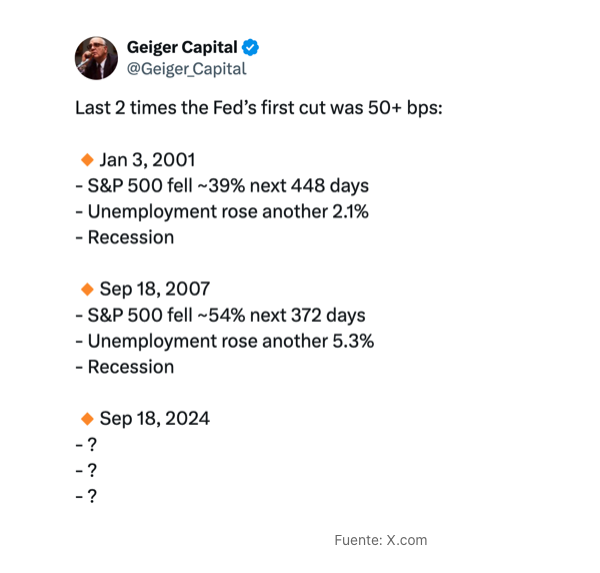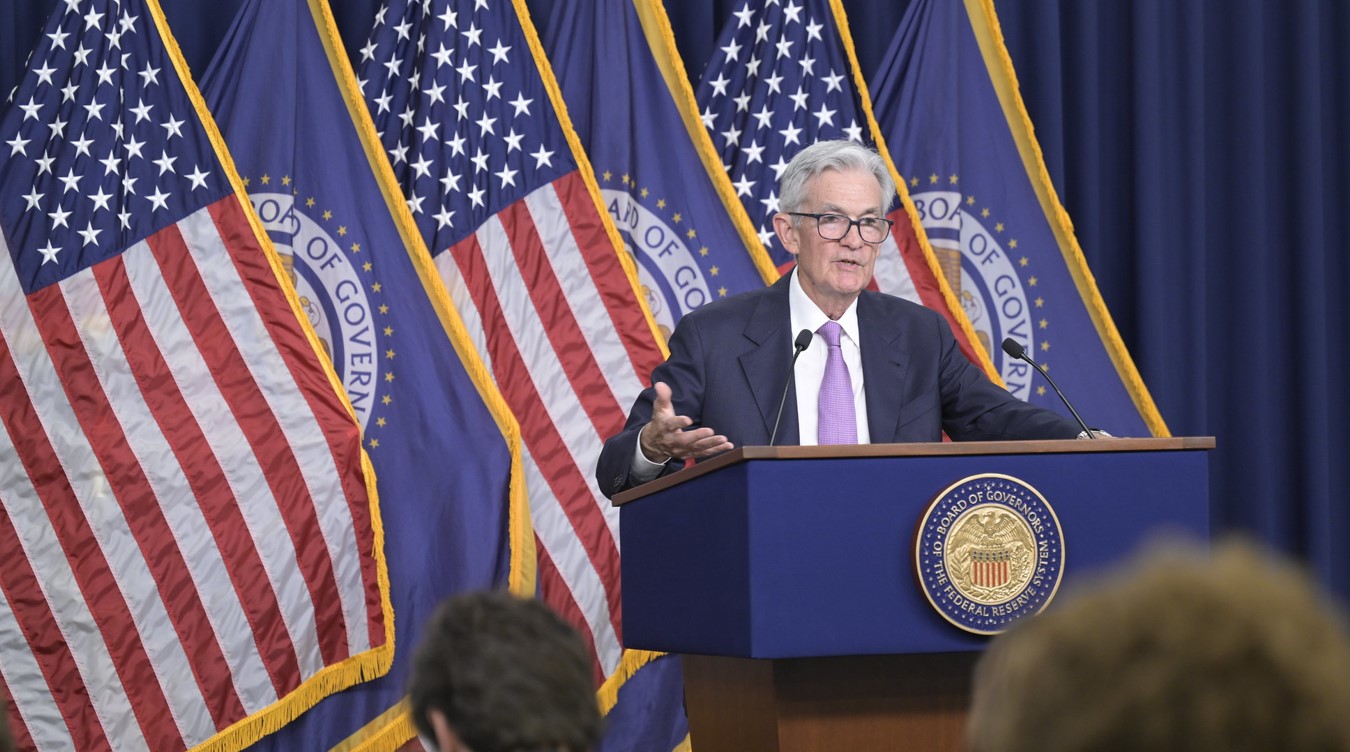On Wednesday, September 18 for the first time since 2020, the U.S. Federal Reserve lowered its benchmark interest rate. This wasn’t a surprise. In fact, the Fed’s Chairman, Jerome Powell, had already hinted at this move during the central bankers’ meeting in Jackson Hole last August.
It wasn’t unexpected for the market either. The U.S. Treasury bond curve had already priced in the Fed’s monetary policy pivot. Even equity markets, reflected in recent index highs, anticipated the move.
So, if the direction of monetary policy wasn’t the surprise, what was? The magnitude.
Eight out of ten Wall Street analysts expected an interest rate cut of 25 basis points. In simple terms, the benchmark interest rate was forecasted to drop by 0.25% to a range of 5.25% to 5.00%. However, that didn’t happen. The cut was 50 basis points. And just as history shows that “the market always kills consensus,” this time it was Powell and his team who carried that burden.
When asked why the aggressive cut, Powell responded, “We are not willing to lag behind events.”
From the Fed’s macroeconomic consistency standpoint, the decision is justified by its projection of higher unemployment rates by year-end and lower expected inflation. The year-end unemployment forecast has increased from 4.2% to 4.4%, while the inflation measure, “PCE Inflation,” is now estimated at 2.6%, down from the previous 2.8%.
Up to this point, there doesn’t seem to be any reason for concern. However, the market doesn’t entirely agree, does it?
After the Fed’s decision, volatility took hold, and indices turned from green to red. It’s true that at this hour, stock futures are pointing to a strong recovery, but the market remains uneasy. Could it be that the Fed knows something the markets don’t at this stage?
Looking at economic indicators and metrics that forecast activity levels, there are no clear warnings beyond a slight marginal deterioration in the labor and manufacturing sectors. Again, nothing alarming.
Therefore, for those who love history and have interests at stake, events may not repeat exactly, though they tend to “rhyme.”

In my view, the Fed’s aggressive move (unexpected to me) is driven by two key factors:
1. The institution doesn’t want to “interfere” in the upcoming presidential election process with monetary policy adjustments, removing any potential noise between the economy and politics.
2. Jerome Powell and his team want to avoid allowing the market to dictate the pace of future adjustments amid the current volatility and extreme sentiment that prevails in today’s times.
If this is indeed the case, investors should focus on the forest, not the trees. The global macro perspective of the monetary policy pivot should, in the medium term, bring a favorable risk-return payoff for emerging market assets, longer-duration corporate debt, and tactical sector-specific equities, seeking value beyond the broader indices.
Time will reveal whether the Fed indeed knew something the investing world didn’t, or if, in this instance, history wasn’t a leading indicator for what lies ahead in the coming months.
The author: Diego Martínez Burzaco is the Country Manager for Argentina at Inviu




